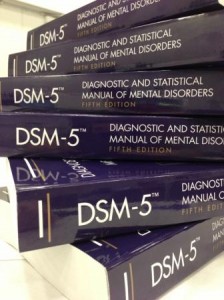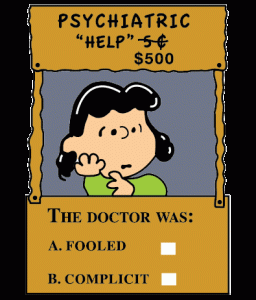December 12, 2013
Hippocratic hypocrisy
 When I graduated from Teachers College in ’07, I donned the goofy ceremonial robes and walked with my classmates at the university-wide commencement. I distinctly remember my astonishment when I heard the medical graduates recite the Hippocratic oath, right there, for all of us to witness. I remember thinking to myself that other professionals should be required to recite oaths too, as lawyers, teachers, journalists, and others all have the power to do great harm, but I suppose that medicine still occupies a unique place, as the power to heal is synonymous with the power to kill.
When I graduated from Teachers College in ’07, I donned the goofy ceremonial robes and walked with my classmates at the university-wide commencement. I distinctly remember my astonishment when I heard the medical graduates recite the Hippocratic oath, right there, for all of us to witness. I remember thinking to myself that other professionals should be required to recite oaths too, as lawyers, teachers, journalists, and others all have the power to do great harm, but I suppose that medicine still occupies a unique place, as the power to heal is synonymous with the power to kill.
I have arrived at a point in my dissertation research where I am now convinced that the psychiatric-pharmaceutical complex is in violation of the Hippocratic oath. I realize that this is a heavy accusation to make, but I now believe that the field has gone beyond simple, or even gross negligence, and has crossed the line into willful harm.
Apollo Physician and Asclepius and Hygieia and Panacea and all the gods and goddesses, making them my witnesses, that I will fulfill according to my ability and judgment this oath and this covenant:
…
I will neither give a deadly drug to anybody if asked for it, nor will I make a suggestion to this effect… In purity and holiness I will guard my life and my art.
…
I make this claim based on a range of evidence – scientific, journalistic, anecdotal, end experiential. Some of this evidence can be found in earlier posts on this blog, as well as in coverage in places like The Icarus Project, Madness Radio, and Mad in America. But this post is less about demonstrating that the oath has been violated and trying to imagine a proportional karmic response.
For starters, consider that pharmaceutical companies don’t even take the Hippocratic oath – their charters don’t contain anything like Google’s “Don’t be evil“, and their employees aren’t required to take the Hippocratic oath upon hire. Their sole responsibility is to maximize shareholder value (and increasingly, that includes breaking the law as the calculated cost of running a profitable business). I’m under no delusion that adopting language like this would instantly reverse decades of malfeasance, but it might help generate a few more Edward Snowdens in the pharmaceutical industry.
It’s fascinating to me that we continue to invoke the Greeks with this oath. Now that it’s been violated, it is our duty to wake Zeus and Apollo and help them raise Olympus. I’m afraid that Jehovah, especially since Jesus, simply doesn’t have the wrath to deal with the crimes that psych-pharma is perpetrating.
For years I thought that a divine lightening bolt would strike psych-pharma over the harmful and abusive use of the toxic atypical anti-psychotics (Zyprexa, Seroquel, Risperdal, Abilify, Clozaril, Geodon, etc). These drugs cause massive obesity, metabolic disorders, and diabetes(!), and are being prescribed liberally to kids, seniors, veterans, and prisoners. Despite billions of dollars in fines for over-marketing these drugs (last month Johnson and Johnson was fined $2.2 Billion for Risperdal, but they assured stockholders this fine would not have an adverse affect on their finances). I am learning how difficult it is to rally voices to defend the defenseless, and lately I have been rethinking approaches for slowing down psych-pharma’s relentless expansion.
As the anniversary of the tragic Newtown killings approaches we need to reiterate the call to redirect the journalistic inquiry following tragedies like these. Unfortunately, mass killings in the US continue at a horrific frequency, and the prevailing journalistic narratives have revolved around gun control and mental illness. The question that needs to be asked following these tragedies is – What psych drug was the perpetrator coming on (or off of) before the attack?
In 2004, the FDA issued a blanket Black Box warning on all antidepressants (updated in ’07) about the increased risk of suicidal thinking and behavior that antidepressants have been found to cause in some cases. The documentary film Prescription Suicide presents a gripping profile this disturbing trend . And, antidepressants may actually cause an increase in violence and aggression, which can be directed inward or outwards, leading to suicidal as well as homicidal thoughts/behavior. While the FDA’s 2007 black box warning only mentions the risk of suicide, the chorus of incidents connecting antidepressants with homicidal thoughts and actions continues to grow, and the FDA is tracking and documenting the violent side effects of psychiatric drugs. While the percentage of patients exhibiting these extreme side effects is low (< ~3%), these drugs are prescribed in such large numbers that even such small percentages add up to significant consequences.
The stories about mass killings in the in the mainstream media have revolved around gun control and mental illness, but crucially, they are missing an essential interstitial step – while the perpetrators may have been going through an emotional crisis, is the psychiatric intervention worse than the original condition? This account won’t explain (away) all of the gun violence in America, but it is only a matter of time before a national tragedy is linked to a popular, brand-name antidepressant.
What’s going to happen when this story finally breaks? Will patients rush to their physicians, demanding to switch to a competing brand (even though the side-effect profiles are quite similar across brands)? What will happen to the stock price of the pharma company whose unlucky number just came up? In the ensuing litigation, will documents emerge demonstrating that pharma has been aware for years of the violent, homicidal side-effects of their products?
There are scandals brewing in Big Pharma that will dwarf the scandals in Big Tobacco.

 Filed by Jonah at 1:47 am under dangerousgifts,ethics,fire
Filed by Jonah at 1:47 am under dangerousgifts,ethics,fire
No Comments


 3 Comments
3 Comments










 In a
In a On September 17th 2011, sleeping giants stirred as the perception of social and and economic injustice in the US finally crossed a critical threshold. And the people spoke.
On September 17th 2011, sleeping giants stirred as the perception of social and and economic injustice in the US finally crossed a critical threshold. And the people spoke.
